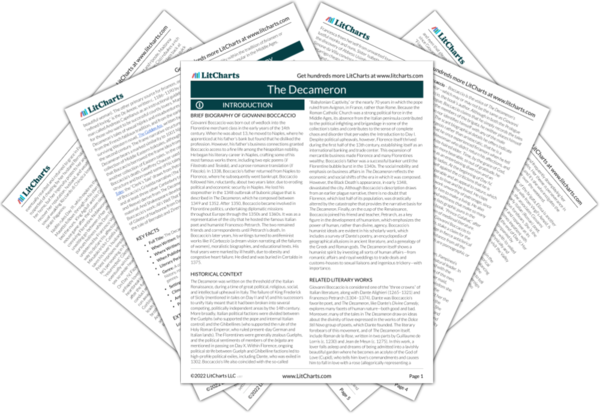Madonna Agnesa’s lie also capitalizes on her husband’s love and concern for their child, which Rinaldo (like any good hypocritical, greedy monk) capitalizes on to get a generous donation that will ultimately support the friars’ lavish lifestyles. The return of the second monk dispels any discomfort over this manipulation, which injects blasphemous humor into the tale with its example of medieval locker-room talk, in which the two friars compare their sexual exploits disguised as prayers. In explicitly tying the sinful act of fornication with the holy act of prayer, the tale contributes a memorable example to the book’s ongoing anticlerical satire.
